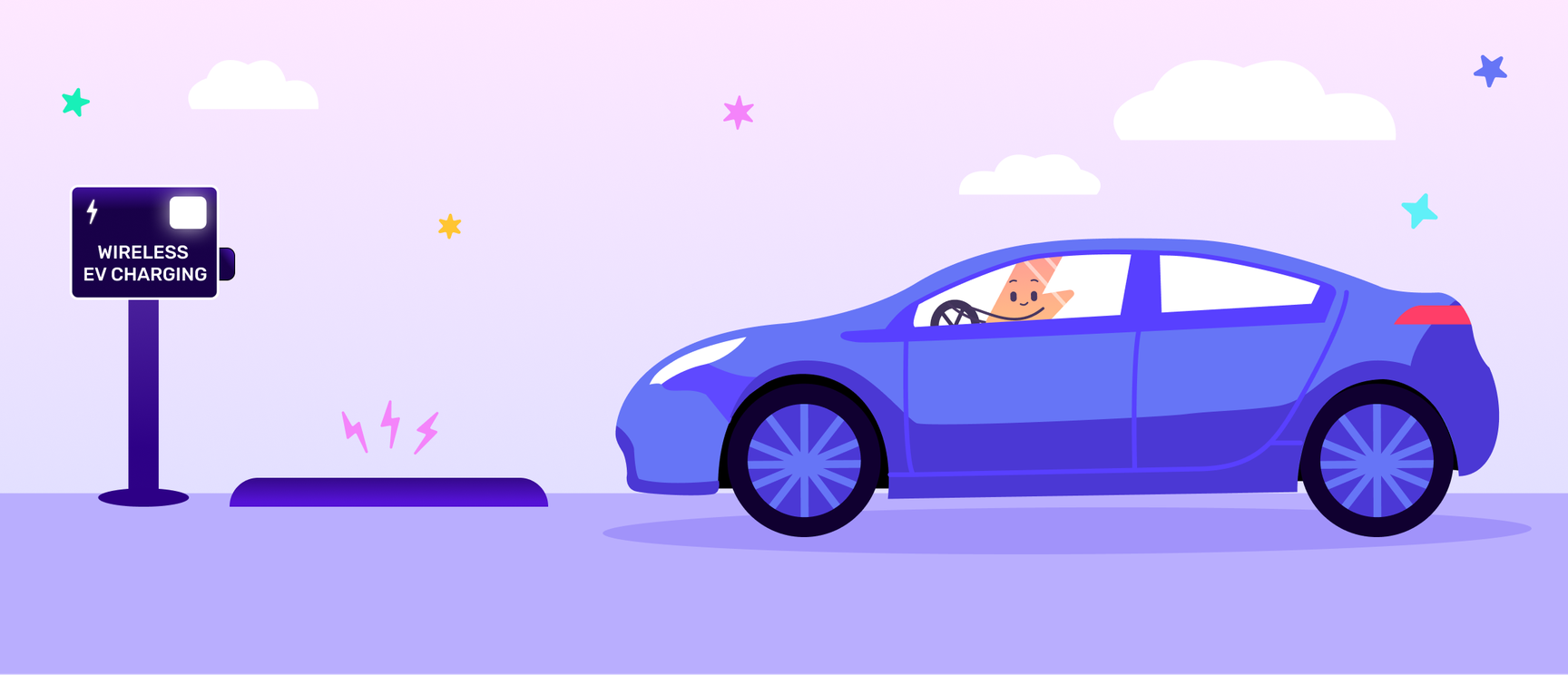November 2023
|Last updated:January 2024
What is wireless EV charging?
Wireless power was something Nikola Tesla theorised back in 1895, and although he never got to witness it, in 2012, wireless power (or inductive charging) came to be through the release of the Nokia 920 - the first commercially available smartphone to offer built-in wireless charging capabilities.
So, if mobile phones - which also use lithium-ion batteries - can wirelessly charge, why can’t electric vehicles?
Let’s get plugged in…
What is wireless charging?
Wireless - or inductive - charging is the transfer of power without cables or wires. There’s some dispute as to when inductive charging was first used, but most sources point to the late 19th century. However, a lot has changed since the late 19th century, and a few different inductive charging methods now exist!
Charging pads - which use tightly coupled electromagnetic inductive charging
Charging bowls - which use loosely coupled electromagnetic inductive charging
Uncoupled radio frequency (RF)
As you might have guessed, electromagnetic is the keyword, and If you’re interested in how it works, our friends at Computer World do a great job of explaining:
A magnetic loop antenna (copper coil) is used to create an oscillating magnetic field, which can create a current in one or more receiver antennas. If the appropriate capacitance is added so that the loops resonate at the same frequency, the amount of induced current in the receivers increases. This is resonant inductive charging or magnetic resonance; it enables power transmission at greater distances between transmitter and receiver and increases efficiency. Coil size also affects the distance of power transfer. The bigger the coil, or the more coils there are, the greater the distance a charge can travel.
What does wireless charging look like in electric vehicles?
Although we don’t like to compare mobile phones with electric vehicles (the battery in EVs lasts far longer!), wireless charging is where we’ll make an exception, as the process would be much the same.
While with mobile phones, you simply place on a small charging pad - with electric vehicles, you’d simply drive onto a large charging pad. If the vehicle and the charging pad were compatible, charging should start within a few seconds. Much like Plug & Charge, this technology would need a ‘broker’ between the vehicle manufacturer and the charging station hardware, which would communicate between the two, start/stop the charging session, and bill correctly.
This is currently what Octopus Electroverse offers for compatible Plug & Charge community members.
Of course, this paints electric vehicle wireless charging in a very simple light - and as you’ll know, that is never the case.
As we’ll get onto a little later, there is currently no standardisation in wireless charging for electric vehicles, which can make implementation tricky. If you want an example of “slightly off” standardisation, just look at Tesla’s plug design - completely different to other manufacturers, which means Tesla drivers must use an adaptor when charging with other providers. We agree it’s not the end of the world, but it’s certainly an annoyance and speaks to standardisation before commercial release.
Are there any pilot schemes for electric vehicle wireless charging?
Yes, there are a few different trials across the globe testing out wireless charging! Genesis and Volvo are leading the way for vehicle manufacturers, but there is also testing happening in the UK too.
Let’s talk about Genesis first:
Back in April 2023, Genesis announced that its wireless charging pilot was already well underway in South Korea and on track for completion in June 2023. The idea behind the trial was that it would shed light on the practicality of rolling out this tech and highlight the hindrances.
During the trial, twenty-three charging pads were installed around South Korea (one being at Genesis HQ) with wireless access open to GV60 and eGV70 vehicles. Ahead of the trial, the vehicles were updated with parking software to help guide the driver in parking correctly over the charging pad so the charge could start.
When the trial finished in June 2023, it heralded mixed reactions from within the Genesis team. Despite the wireless charging software and hardware being a success, charging speeds were something of a concern, maxing out at 11 kW.
This would mean a Volkswagen ID.3 (77 kWh battery) would take around 4.5 hours to charge from 20 - 80%.
Ultimately, the Genesis head of product, Marc Choi, decided the tech wasn’t quite there, and Genesis has gone back to work on faster charging speeds before a release date is announced.
It’s worth noting that 11 kW isn’t the slowest charging speed out there - in fact, most on-street chargers in the UK (such as those built into lamp posts) top out at 3.5 kW.
With all public charging, you should match the speed of the charger to the needs of your car/journey. If you want a quick 10-minute top-up, you’ll need to find your closest 100 - 350 kW charger instead!
We’re going back to March 2022 with this pilot, but unlike Genesis, it’s still ongoing! Yes, until mid-2025, Volvo has invited the XC40 Cabonline taxis to charge wirelessly in Gothenburg, Sweden, and monitor the progress.
Although Volvo haven’t announced the amount of wireless chargers they have installed and are testing, they have stated that charging speeds will be up to 40 kW, nearly 4 times the speed of Genesis chargers:
The charging station sends energy through the charging pad, which is picked up by a receiver unit in the car. To easily align the car with the charging pad, Volvo Cars will use its 360-degree camera system. For the fully electric XC40 Recharge cars, the wireless charging power will be more than 40 kW, making the charging speeds around four times faster than a wired 11 kW AC charger and almost as fast as a wired 50 kW DC fast charger.
In total, the Volvo cars will be used for more than 12 hours a day and drive 100,000 km per year, which also makes this the first durability test of fully electric Volvo cars in a commercial usage scenario.
What about closer to home?
Oh yes, there are wireless charging trials in the UK too!
In Nottingham, the Wireless Charging of Electric Taxis (WiCET) project launched in receipt of a £3.4 million government grant to test wireless charging in local taxis.
Much like the Volvo and Genesis trials, wireless charging pads would be installed - however, in this case, it would be 10 kW charging pads at select taxi ranks, and only ten vehicles would be monitored.
You can check on the WiCET project progress here!
What are the challenges to wireless charging in electric vehicles?
1. No common standards for wireless charging
2. Slower charging speeds
At the moment, the top charging speed for wireless charging has topped out at 40 kW, which is plenty fast, but with other wired chargers topping out at 350 kW, wireless charging needs to pick up pace
3. More expensive to build
What’s the future like for wireless charging in electric vehicles?
Although wireless charging for electric vehicles is definitely on the horizon, it’s still a few years off before becoming commercially viable.
With the Volvo and Nottingham trial still underway - and surely more to come - it’s important that the necessary testing continues while standardisation is created to future-proof the concept.
Just watch this space…
Feeling enlightened or do you think something was missing? Let us know by sharing your feedback.
Interested in learning more? Head over to our Electroverse Community area for more electrifying content.





